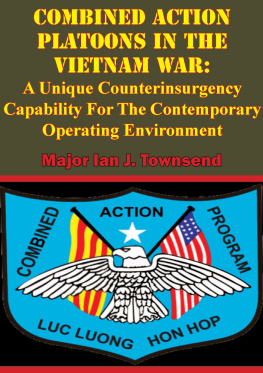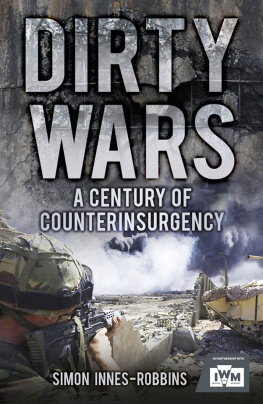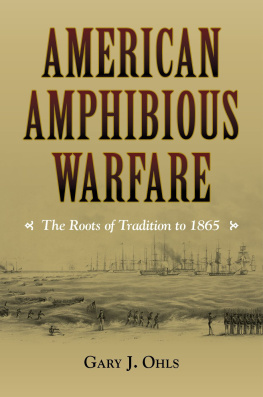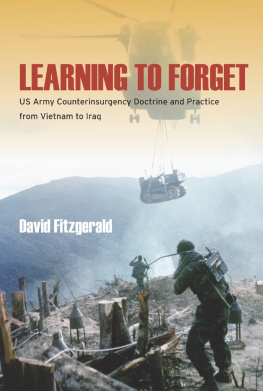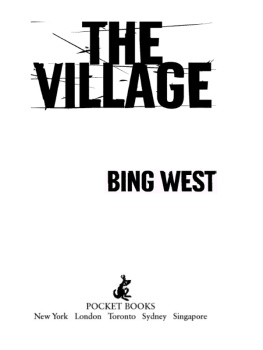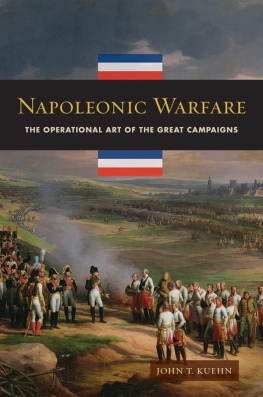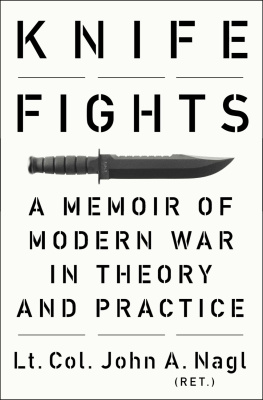

This edition is published by PICKLE PARTNERS PUBLISHINGwww.picklepartnerspublishing.com
To join our mailing list for new titles or for issues with our books picklepublishing@gmail.com
Or on Facebook
Text originally published in 2013 under the same title.
Pickle Partners Publishing 2014, all rights reserved. No part of this publication may be reproduced, stored in a retrieval system or transmitted by any means, electrical, mechanical or otherwise without the written permission of the copyright holder.
Publishers Note
Although in most cases we have retained the Authors original spelling and grammar to authentically reproduce the work of the Author and the original intent of such material, some additional notes and clarifications have been added for the modern readers benefit.
We have also made every effort to include all maps and illustrations of the original edition the limitations of formatting do not allow of including larger maps, we will upload as many of these maps as possible.
COMBINED ACTION PLATOONS IN THE VIETNAM WAR: A UNIQUE COUNTERINSURGENCY CAPABILITY FOR THE CONTEMPORARY OPERATING ENVIRONMENT
By
Major Ian J. Townsend
TABLE OF CONTENTS
Contents
ABSTRACT
In Vietnam, the III Marine Amphibious Force used Combined Action Platoons (CAPs) as one part of its operational level counterinsurgency campaign. These platoons provided security assistance to the South Vietnamese Popular Forces and civic action to the village based population. To measure the operational effectiveness and the current relevancy of this specific type of combined action their activities are evaluated against current Army counterinsurgency doctrine. This monograph demonstrates the value of the CAPs as one element in the context of a counterinsurgency campaign, and how this form of combined action may serve as a tool for Army commanders conducting operational art in future. Independent operations are not the future of American warfare in the 21 st Century. Contemporary thought about the future of American warfare is that the conventional forces of the United States Army will have an enduring requirement to build the security forces and security ministries of other countries. Some form of combined action will be a required in American military operations for the foreseeable future. Given this truth, CAPs provide a practical historical example of a combined action technique that can serve as a tool for the future.
ACRONYMS
ARVNArmy of the Republic of Vietnam
CACOCombined Action Company
CAPCombined Action Platoon
CAP programCombined Action Platoon Program
CINCPACCommander In Chief, Pacific Command
CORDSCivil Operations and Revolutionary Development Support
CTZCorps Tactical Zone
DRVDemocratic Republic of Vietnam (North)
FMFPacFleet Marine Force, Pacific
MAAGMilitary Assistance Advisory Group
MACVMilitary Assistance Command Vietnam
MAFMarine Amphibious Force
MEBMarine Expeditionary Brigade
MEDCAPMedical Civic Action Program
NVANorth Vietnam Army
OPLANOperation Plan
PACOMUnited States Pacific Command
PAVNPeoples Army of Vietnam (DRV)
PFPopular Forces
RFRegional Forces
RVNRepublic of Vietnam (South)
SDCSelf-Defense Corps
TAORTactical Area of Responsibility
USMCUnited States Marine Corps
VCViet Cong
INTRODUCTION
Were using a theory
Weve used it before
If you aint got no people,
You aint got no war.
Lyrics sung by disheartened Marines in Vietnam
Though such talents may be useful, the CAP Marine does not need to be the linguist, sociologist, psychologist, expert on economic development, and saint that many observers have thought was required. The prime benefits of the operation are derived simply from the villagers observation of the Marines working with the Popular Force in his defense. What is needed, rather than a genius jack-of-all-trades is a good Marine as evaluated by the same standards that have been applied throughout the Marine Corps history that is, a superior fighting man and a gentleman. Bruce Allnutt
Conducting unified land operations is complex work for any military force. Operations become more complex when enemy combatants take the form of an insurgent force, not strictly a conventional one. An accepted and proven approach to counter an insurgent enemy is combined action. This leaves room for evaluation of historical combined action techniques to determine if they might provide alternatives for future operational approaches to counterinsurgency. This monograph demonstrates that the Army can draw valuable lessons for future campaigns from the United States Marine Corps (USMC) approach to counterinsurgency and use of combined action in Vietnam.
On March 8, 1965, the Marine Corps officially entered South Vietnam with an order to land the landing force on the beach near Da Nang. The man entrusted by the Commandant of the Marine Corps, General Wallace Greene, to lead III MAF in Vietnam was Major General Lewis W. Walt, who assumed command at an official ceremony in Da Nang on June 4, 1965.
In 1965, Marine Corps commanders exercised authority and direction much like Army (and Marine) leaders do today. Although not titled as such, they drove the operations process through the execution of mission command. In this process the commander had the same requirements to understand, visualize, describe, direct, lead, and assess operations. General Walts first priority was to understand his operational environment. He stated, When I first arrived in I Corps, I didnt really understand how complicated this war was. I didnt mean I lacked information. I had more facts, figures, statistics and plans than I could handle. But I did lack understanding. With General Walts, Major General Nguyen Chanh This (ARVN I Corps Commander), and General Westmorelands approval, the Marines took a more offensive approach to airfield defense. Within General Walts intent, one Marine battalion developed an innovative concept that complemented the III MAF pacification operation and increased the security of the airfields. This concept was the Combined Action Platoon (CAP).
This monograph evaluates the CAP program as part of the III MAF operational campaign in Vietnam to demonstrate that it is still a doctrinally valid counterinsurgency concept that is relevant to the U.S. Army in the contemporary operational environment. This historical evaluation of the CAP program provides practitioners in the art of warfare a better understanding of the importance, difficulties, and risk involved in combined action as part of an operational campaign. Every campaign in every war is different. The modern operational artist must use the facts at hand and all means available to determine the way his operations will achieve the desired ends. If a concept such as the CAP program is suitable, feasible, and acceptable then the operational level commander should consider its implementation in some form as part of his operational approach. This monograph also acquaints tactical level commanders to aspects of combined action from the Vietnam-era Marine Corps perspective and provides them a foundation from which they can begin to visualize how and why they should incorporate some level of training for their leaders and soldiers on this specific counterinsurgency technique.
This monograph provides a clear picture of the CAP program and the importance of combined action in counterinsurgency operations. The current relevancy of this specific type of combined action and the actions taken by the units in the program are evaluated against current Army counterinsurgency doctrine. The scope of this monograph is limited to the CAP programs relationship to the operational level of war. This monograph is not a critique of U.S. strategy in Vietnam or decisions made by strategic leaders, although strategic decisions affected the operations conducted by III MAF. The purpose of this monograph is to demonstrate the value of the CAP program as one element in the context of a counterinsurgency campaign, and how it may serve as a tool for Army commanders conducting operational art in the future. Through its achievement of this, it will contribute to the body of knowledge of both the operational level of war and the history of the USMC CAP program.
Next page
